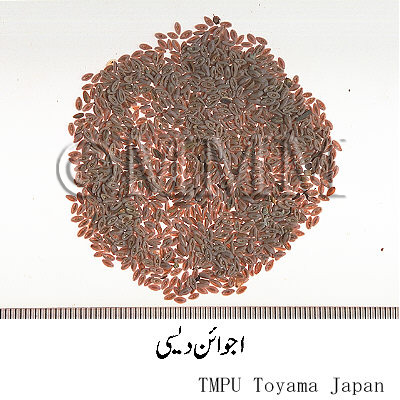Crude drug sample data base
※Click on the image to enlarge it.
The capital city, provincial capital city or the representative
location of its administrative area is indicated.
location of its administrative area is indicated.
Production area information
https://ethmed.toyama-wakan.net/img/pin_san.png
25.0700428
67.2847875
Collection information
Islamic Republic of Pakistan,Karachi [Karachi], Sind
https://ethmed.toyama-wakan.net/img/pin_nyu.png
Scientific information data base
| Crude drug name | Urudu name, English name | Baqla, Broad Bean | ||
|---|---|---|---|---|
| Arabic name / Persian name | Baqla / Bakla | |||
| crude drug image |
| |||
| Original plant name | Vicia faba Linn. | |||
| Family name | Leguminosae | |||
| Used part | Seeds | |||
| Distribution area | A herb, native to N. Africa, commonly grown in N. W. India. | |||
| Function and properties | Cosmetics, Swellings, Ulcers, Head, Eye, Chest, Food, Excretion. It is a weak detergent and a strong flatulent. Roasted baqla is less flatulent but slow to digest. The Nabti variety is highly constipating and its peel is very astringent. The Egyptian variety is most constipating but detergent. One of the characteristics of baqla is that a hen fed on it ceases to lay eggs and human beings get nightmares. Fresh beans cause itching. It is considered anti-inflammatory and expectorant. | |||
| Specific actions | Anti-inflammatory. | |||
| Frequency in use | Commonly cultivated as vegetable. Also grown for fodder in northwest India. | |||
| Common uses | Cosmetics: The peel, when applied on hair as a plaster, thins it. Similarly such plaster stops growth of hair on the pubis. Baqla especially its peel acts as detergent in pityriasis, freckles, lentigo and improves the complexion. Swellings: A plaster of baqla with vinegar is made and applied on the swellings of the testicles. Ulcers: It is useful in muscular convulsion. Head: It produces headache and aggravated all existing headache. A green and bitter thing found inside the bean of Egyptian variety, grounded with rose oil and dropped into ears, relieves otalgia. Eye: A plaster made of baqla, honey, and fenugreek is useful in lividity and ecchymosis. Chest: It is beneficial for the chest, haemoptysis/hemoptysis and cough. A plaster made of baqla, honey and powdered fenugreek is useful in laryngitis and tonsillitis. A plaster of baqla is useful in mastitis and congestion of milk in the breasts. Food: It is hard to digest but is not slow in its downward movement and final emission. It does not produce obstructions. It acts as an anti-emetic when used after cooking it with vinegar. Excretion: A decoction of baqla especially its peels, vinegar and water is useful in chronic diarrhoea/diarrhea. The Nabti variety is useful for intestinal abrasions. | |||
| Side effect | It produces headache and flatulence. | |||
| Medical system | Unani | |||
| Traditional concept | Temperament | Fresh baqla cold and moist; dried baqla cold and dry in the first degree. According to Avicenna (Ibn Sina) it is somewhat moderate in temperament. | ||
| Drug effect | It is very beneficial for reducing the inflammations of various types. It also produces flatulence. Hard to digest. | |||
| Dosage | As diet: as per capacity; as drug: 3 to 5 gm. | |||
| Substitute | Lobia (Vigna unguiculata (L.) Walp. syn. V. sinensis (L.) Savi ex Hassk), cowpea. | |||
| Corrigent (corrective) | Roghan badam (Prunus amygdalis Batsch.), almond oil. | |||
| References | Reference book Tips! | Glossary of Indian Medicinal Plants, 1956. Chopra, R.N., Nayar, S.L. and Chopra, I.C., Council of Scientific & Industrial Research, New Delhi. - New Edition (1996) National Institute Science Communication; Supplement p 254. Makhzanul-Mufradat (Khawasul Adviyah), Hakeem Kabiruddin, Daftar Al-Masih, Qarol Bagh, Delhi. pp 114-115. Dictionary of Economic Plants in India, 1996 (2nd Rep.). Singh, U; Wadhwani, A. M. and Johri B.M. Indian council of Agricultural Research, New Delhi. p 240. Al-Qanun Fil-Tibb. Avicenna. (English translation of the critical Arabic text), Book 2, 1998. Hameed, H. A. (editor), Dept. of Islamic Studies, Jamia Hamdard (Hamdard University), New Delhi. pp 88-89. Al-Jamili Mufradt Al Adwiya Wal Aghziya (1197-1248 A.D.). Ibn al-Baytar. Vols. 1-3, 1985-1999. Central council for Research in Unani Medicine, Janakpuri, New Delhi. pp 191-194. | ||
| Last renewal date | 2024/02/22 | |||



